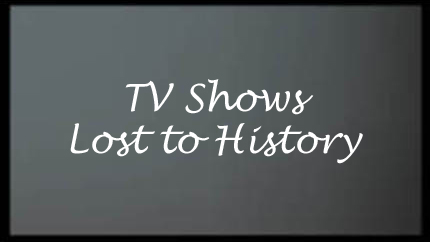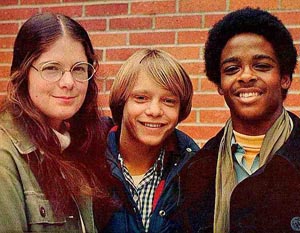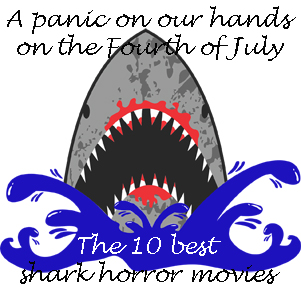If not for “Dawson’s Creek,” I might not know “James at 15” (1977-78, NBC) existed. Somewhat obsessed with “DC” at its inception, I picked up Andy Mangels’ unauthorized Kevin Williamson biography “From Scream to Dawson’s Creek” (2000). In it, Williamson reveals he was heavily influenced by the show and wanted to make a “James at 15” for the 1990s.
Influence on ‘The Creek’
At long last, I recently watched the first 11 episodes (I’ll look at the last 10 episodes, called “James at 16,” in a future post), and – as I expected – I fell in love with it as a chronicle of teen life in 1977 (I was born in ’78 and am curious about the decades just before my time), a portrait of Boston, and an example of how far TV-storytelling conventions could be pushed at the time.
Reflecting on how “James” stood out from the TV pack, Williamson said:
“I just thought that it dealt, at the time, with some really cool issues. I just remember that James talked the way I wish I had talked. He also said some of the things I wished I could think of, the things I thought of when I was lying in bed at midnight, as opposed to when I was really in the situation.”

“James at 15” (1977-78)
NBC, 11 episodes
Creator: Dan Wakefield
Stars: Lance Kerwin, Linden Chiles, Lynn Carlin
When watching James Hunter (Lance Kerwin), I alternate between liking him and being annoyed by him — the same way I feel about Dawson Leery. He always has strong opinions and is outspoken, then he quickly has new strong opinions when presented with contradictory evidence. He always openly admits that he has learned something new – even to his parents – yet never recognizes his pattern of jumping into things without thinking them through.
James’ family moves from Oregon to Boston in the pilot movie, a parallel to creator Dan Wakefield’s childhood move from Indiana to Boston. (I don’t know if Williamson setting “DC” in Massachusetts –rather than North Carolina, where it was filmed — was a nod to “James at 15,” but it’s as good an explanation as any.)
Diverse trio of friends
“James at 15” is undeniably a TV show shot in the 1970s, and I don’t just mean because the teens say “the pits,” “bug off” and “turkey.” I mean you’re not gonna get great cinematography or production values. However, the Boston setting does pop thanks to the pilot montage of James being overwhelmed by the subway system, and the Hunters’ townhouse in the heart of the city.
The family’s living room shares status as the primary setting with Bunker Hill High School, a utilitarian building that would be foreboding to any new student lacking the life force of James. Tunes from the likes of Steve Miller, James Taylor, Shaun Cassidy and Simon & Garfunkel help place the show in its era, while also being a well-ahead-of-its-time precursor to “Beverly Hills, 90210” and The WB stalwarts in how it highlights pop music.
James makes two best friends in Beantown. Sly (David Hubbard, later known as David Raynr) sells dried eggplant as marijuana, noting that it works if people think it does. Marlene (Susan Myers) is an amateur anthropologist/psychologist who carries around a tape recorder in case she has an opportunity to interview subjects about their thoughts.
Well-read on teen psychology, she tells James in “Unrequited Love … Twice” (episode 9), “I don’t poke around in my own head; I have it all together.” But she’s not totally believable when she says that, and in “Star-Crossed Lovers” (11), that’s proven when she crushes on a street-corner troubadour.
We know from “Friends” (2) that Sly is from a middle-class family. His nickname (his actual name is Ludwig, after the composer), his vocation and his jive-talking speech (much more toned-down than the “Airplane” parody) are attempts to get in touch with his black roots. However, there isn’t a Sly-centric episode among these first 11.
Continuity doesn’t really matter
I love the fact that the trio of friends accept each other on their own terms and aren’t bothered by the fact that they shouldn’t – on paper – have anything in common. What they have in common, of course, is that Wakefield and his writing team put words in their mouths (just as Williamson would do for Dawson, Joey, Pacey and Jen), so they are all interested in learning about life.
James is more open to variety than the other two, but they are open to James, so it works out. In “Unrequited Love … Twice,” Sly could be speaking for them all: “I’m an open-minded dude. Like if a cat’s a Yankees fan, that’s his business. Maybe he had a weird upbringing or something.”
“James at 15” suffers from Continuity Doesn’t Really Matter (CDRM) syndrome, which afflicted most TV series prior to the DVD/streaming and TV scholarship age. Indeed, a show as recent as “Gilmore Girls” has this affliction where the writers just don’t worry about minor continuity points, figuring that if they don’t notice it, viewers won’t either.
The continuity flow on “James” is not bad by any means, but it stands as a product of its time in “Actions Speak Louder” (10), when James completely out of the blue is fluent in American Sign Language and has a good friend who is deaf. Also in this episode (which, surprisingly, comes from the pen of Ronald Rubin, the second-most prolific writer after Wakefield), James, Marlene and Sly all have dates for James’ party, and the dates are characters we’ve never met before.
This is odd because Marlene and Sly have shown no predilection for dating up to this point (although it’s clear Sly has smooth moves) and James’ biggest running thread is that he can’t land a date. It seems he wouldn’t be so casual about landing one, nor would he be so oblivious to the advances of cute blonde Sherry.
In another example of CDRM, James has a tendency to make a close friend in one episode who is never mentioned again. This happens with Pam, the titular “The Girl with the Bad Rep” (3); Diane, the Rainbow Fellowship meditation-cult leader in “Higher Ground” (4); and Scott, the deaf student in “Actions Speak Louder.”
There are exceptions, though. The British-accented Paisley sometimes joins James’ group, and Bobby – his best friend from Portland – visits in the weirdly titled but powerful “The Apple Tree, the Singing and the Gold” (6).
Restating the premise
“James at 15” is also from the era when each episode had to restate its premises for first-time viewers, causing narratives to move forward in fits and starts. For example, Sly repeats the fact that he passes off dried eggplant as marijuana throughout the 11 episodes without any forward movement in the joke or the plot.
The writers are uninterested in commenting on the dangers of the drug war, whether it’s Sly getting arrested or getting attacked by customers who feel they’ve been ripped off.
Arguably, James is an odd choice for a relatable main character, since he’s outstanding at not only making friends, but also photography, swimming and flute-playing. Still, the goal of “James” is not necessarily to show an un-idealized high schooler (even today, sad sacks are a tough sell as protagonists), but rather to show the life of a high schooler, ANY high schooler, as it really is.
With a possible nod to “Family” (1976-80), which is also on my list of classics to watch, “James” pioneered the concept of portraying teens accurately. This contrasted with popular sitcoms such as the simplistic “Brady Bunch” (1969-74) and “Happy Days” (1974-84), which wasn’t even set in the time it aired.
In addition to Williamson remembering “James” fondly, many TV historians do as well, and it’s a shame it is lost to history.
Here are my rankings of the first 11 episodes:
1. “The Apple Tree, the Singing and the Gold” (episode 6, written by Ronald Rubin)
In this honest examination of loss and mortality, Bobby — James’ best friend from Oregon — has a lung virus and ultimately dies from an infection. The final scene where James reads Bobby’s letter to Paisley, Sly and Marlene (who had all grown close to Bobby on his visit) is a tear-jerker as it ends with everyone walking away wordlessly and getting on their bikes.
When Bobby’s mom buys her son a sweater and wants to give it to him, it’s an example of the artistry of small moments that calls to mind the “Buffy” episode “The Body.” In 1977, TV couldn’t handle that level of beauty – it doesn’t have enough angles, editing tricks or music in its tool kit yet — but oh how I love “James at 15” for trying.
2. “Star-Crossed Lovers” (11, Bernie Kahn)
From the moment I met her, I looked forward to the first Marlene episode, where her scholarly façade is broken down. It’s worth the wait, as she falls for a sketchy street folkie named Dusty (Randy Richards, a pretty good musician, actually), and – in the kicker – James and Sly work together to protect Marlene from heartbreak.
In somewhat of a blind spot (perhaps due to the era), the writers miss a chance to portray Marlene as awkward and shy in her first romantic encounter; it seems somewhat out of character that she’s so comfortable and mindful in her intimate scenes with Dusty.
3. “Kathy’s in the Shower” (4, Dan Wakefield)
This is a classic example of James having strong conservative feelings on an issue only to change his mind to a more nuanced view. He believes his sister Kathy (Deirdre Berthrong), 19, is wrong to keep house with her professor/lover Jud, 30. James’ dad Paul (Linden Chiles) is conflicted, noting that while he believes in “live and let live” for strangers, he can’t bring himself to hold the same philosophy for his daughter.
In a departure from how this issue would be treated today, Paul and Meg (Lynn Carlin) aren’t offended by the age difference so much as the fact that their daughter doesn’t want to marry Jud yet.
4. “Actions Speak Louder” (10, Paul Huson and Rubin)
This is an out-of-continuity episode as James suddenly has a deaf friend and knows sign language; and James, Sly and Marlene all inexplicably land dates without talking about it all day. That having been said, 34 years before “Switched at Birth,” this is a great portrayal of the struggle of being deaf.
Although the sequence of James plugging his ears and walking through Boston is contrived, it’s also effective as the editors switch between sound and silence, forcing us to sympathize with Scott’s life while also realizing we’ll never fully understand it.
5. “Unrequited Love … Twice” (9, Leonard Kantor and Wakefield)
Years before George Costanza thought of it, James swears off girls to focus on sports and developing his cooking skills – until the very next scene when a cute blonde college student appears at his door. But, of course, she’s not interested in James. Meanwhile, the 11-year-old friend of younger sister Sandy (Kim Richards, now a “Real Housewife”) is attracted to James, he’s annoyed by the brat, and we wait to see how long it will take for James to notice the parallel to his own love for the college coed.
But the highlight is when James kisses Marlene to prove he’s not all talk, and she rides off on her bike, mildly flustered. If there were ‘shippers before that term existed (and I’m sure there were), they giggled at that moment.
6. “The Girl with the Bad Rep” (3, Rubin and Wakefield)
James gets rapey during his photoshoot of the titular Pam, but they become friends after he convinces her to give him another chance: “I think I’m a pretty OK guy and all, but sometimes I do something really rotten,” James accurately describes himself (and most human beings).
Starting a series trend, Pam wants to be just friends with James. As a wonderful time capsule, this ep features James and Pam attending a screening of “Star Wars” (because that’s what people did in 1977).
7. “Pilot” (1, Wakefield)
The two-hour introductory movie nicely captures how traumatizing the experience of moving is for a kid, through imagery such as the Hunters’ old empty living room in Oregon and their new empty living room in Boston. James’ tendency for bad luck with women begins when he hitchhikes back across the country to visit Lacey, only to find she has a new boyfriend. This also causes a viewer to realize “A-ha! That’s why James landed her so easily.”
The most interesting of-the-era element is that the Hunter parents are cleaning the house and Sandy and Kathy are playing board games when James returns. They aren’t thrilled that he ran away, but nor do they seem as concerned as if this plot happened on a modern TV show. Free-range kids in the ’70s had A LOT of range, and this jibes with the parenting portrayal in the 1976-set “Swingtown” (2008). Also of note, the pilot introduces the gimmick of showing James’ daydreams, idealized versions of what could happen in a given scenario, something it would gradually scale back on (Still, does “Lizzie McGuire” owe it a debt?).
8. “Mrs. Carson” (8, Nancy Sackett and Wakefield)
James’ frustration with ending up friends with girls comes to a head here. The title character is a pregnant 24-year-old teacher whose husband has run off. As a viewer, we feel she is taking advantage of James, and it gives weight to James’ offended and frustrated rant about how women constantly want to be his friend.
I’m cautious about painting James as the victim, but considering that he always makes clear his intentions to date girls rather than be their friend, I can’t help but feel he has a bizarre streak of bad luck. At the end, James moans to Kathy: “She’s the only woman I’ll ever love. I’m burned out at 15” — a perfect encapsulation of how James feels and how silly teenage heartbreak can appear to an adult outsider.
9. “Fast and Loose” (7, Joyce Eliason and Wakefield)
James’ tendency to meet new friends on their own terms backfires as he gets caught up with Cornell’s “Seize the day” philosophy. We can see it’s a bad decision right up to the point where he gets thrown in jail for shoplifting at Cornell’s urging, but we can also understand why James doesn’t want to abandon this young man who doesn’t know how to make friends.
A fun slice of the time: Cornell’s dad has access to a catalog of rentals, and Cornell and James watch “Rebel without a Cause” on a home projector. It was an early version of the Netflix mail service that predated VCRs and video stores, and it also served as a rich-person status symbol.
10. “Friends” (2, Wakefield)
James’ newcomers party draws Sly, Marlene and Paisley – none of whom, humorously, are actually newcomers to Boston – and they don’t get along with each other. The struggle of making new friends is encapsulated with the staging of the quartet sitting around the Hunters’ living room in awkward silence.
Yet in later episodes they’ll be sitting around a table at the sub shop (“James’ ” answer to “Dawson’s’ ” Ice House) in companionable chatter. So, in retrospect, “Friends” shows that friendships sometimes have rocky starts that are worth plowing through.
11. “Higher Ground” (5, Joyce Keener and Rubin)
James and Marlene are interested in studies — backed up by their own person-on-the-street polls — that show people are unhappy despite all the good things about living in modern times. Suspecting he’s unhappy himself, James joins a meditation cult, gets Friend Zoned by its cute blonde leader (of course), then realizes it’s not for him.
In an example of “James at 15’s” occasional bone-dry humor, James tells Diane: “I just can’t cut this. I’ve tried the meditation, the bean curds, the kelp, and – hardest of all – the pure thoughts.”

This blog post is part of a series about great short-lived TV shows that haven’t been released on DVD or digital or streaming services, and are rarely – if ever — shown in syndication. While some of these shows can be found somewhere on the Internet, fans of great TV want to see them get a proper release. If you’re one of those fans, your best bets are to vote for the show at TVonDVD.com or to request information from Amazon.com in the event the show gets released. This will let the copyright holder know of your interest.
Main image: NBC publicity photo


